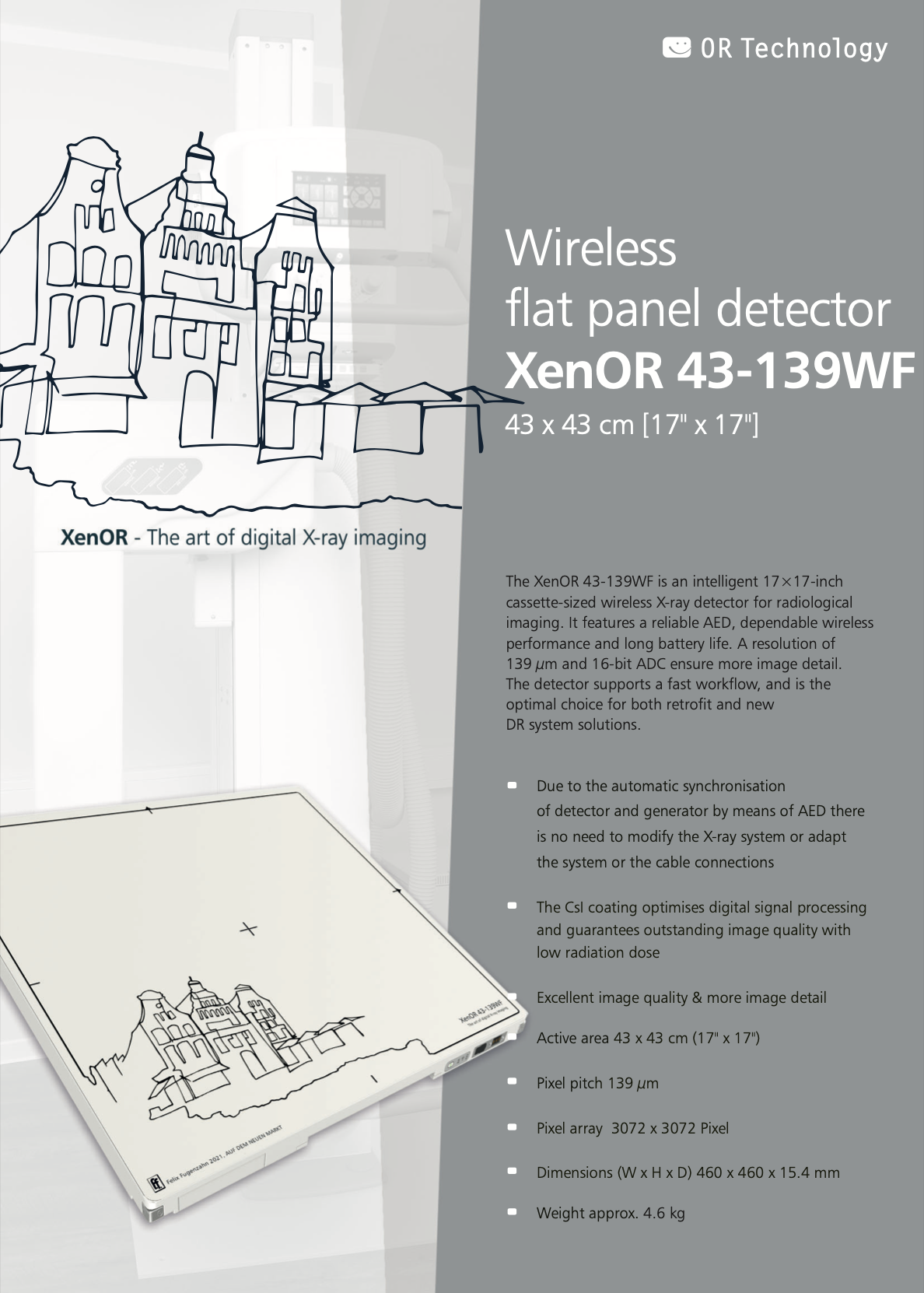Find out more about how this website uses cookies to enhance your browsing experience.
Revolutionise your x-ray imaging workflow
with DR technology
Why Upgrade to DR?
Do you currently use CR or film? Or are you thinking about adding an x-ray service to your clinic? With the development DR technology and the reduction in price of DR systems, having leading x-ray technology in your clinic is no longer an expensive dream!
Computed Radiography (CR) and Digital Radiography (DR) are both imaging techniques used in medical radiology to produce digital X-ray images. While they are similar in some ways, they differ in their underlying technology and workflow.
Continue reading for key differentials between CR and DR, so you can decide what is right for your clinic.




For detailed information
on XenOR DR panels,
click here:
Computed Radiography (CR)
CR is an older technology that predates DR. It uses a cassette-based system that contains a photostimulable phosphor plate. When the plate is exposed to X-rays, the energy is stored in the phosphor material. After exposure, the cassette is processed in a CR reader, which uses a laser to stimulate the stored energy in the phosphor plate. This emitted light is then captured by a photodetector and converted into a digital image.

Advantages of CR:
- Cost-effective: CR systems are typically less expensive than DR systems, making them a more affordable option for some healthcare facilities. However, DR has never been more affordable - Take advantage of our CR Scrappage Scheme!
- Flexibility: Multiple plate sizes offer good flexibility.
Disadvantages of CR:
- Workflow: CR requires a manual step of processing the cassettes in a dedicated reader, which can slow down the imaging workflow compared to DR.
- Space: a processor is required which can take up precious space in small clinics
- Image quality: CR images may have slightly lower spatial resolution and dynamic range compared to DR, as the phosphor plates have limitations in capturing fine details.
- Maintenance: with multiple moving parts, CR systems can be expensive to maintain.
Digital Radiography (DR)
DR directly captures X-ray images using a digital detector system. Direct DR uses a flat-panel detector (FPD) that consists of a scintillator layer and an array of electronic photodiodes. When X-rays pass through the patient's body, they interact with the scintillator, which converts the X-ray energy into visible light. The photodiodes then convert the light into an electrical signal, which is directly digitized into a high-quality digital image and sent to a viewing monitor wirelessly or through a cabled set-up.



Advantages of DR:
- Much greater image quality and no image degradation (CR cassette images typically become less defined over time).
- Significantly faster image acquisition (3-6 seconds on DR vs circa 1 minute on most CR systems).
- Reduces patient radiation dose by >75% and minimal chance of needing to retake.
- Lower servicing costs and no lifetime costs associated through degradation such as replacement rollers (discontinued from AGFA) and cassettes (advised every 2 years with CR systems to preserve image quality).
- All-in-one PC connects directly to panel removing the need for a bulky processor as with CR.
- Flexibility: the CelticSMR DR systems can be retrofitted to any current set-up, ensuring easy installation
- OR-DR software includes visual positioning guide to assist with imaging.
Disadvantages of DR:
- Cost: DR systems tend to be more expensive than CR systems, making them a larger investment for healthcare facilities. With our limited CR Scrappage scheme, DR is more affordable than ever. CONTACT US to find out more.
- Protection: requires protection from dropping or mishandling.
In summary, while both CR and DR produce digital X-ray images, CR is an older technology that relies on phosphor plates and requires a cassette-based system and separate reader. DR, on the other hand, directly captures X-ray images using digital detectors, offering faster image acquisition, higher image quality, and dose reduction benefits. With the price of DR systems reducing, it is becoming ever more appealing to the majority of practices.
Related Products


